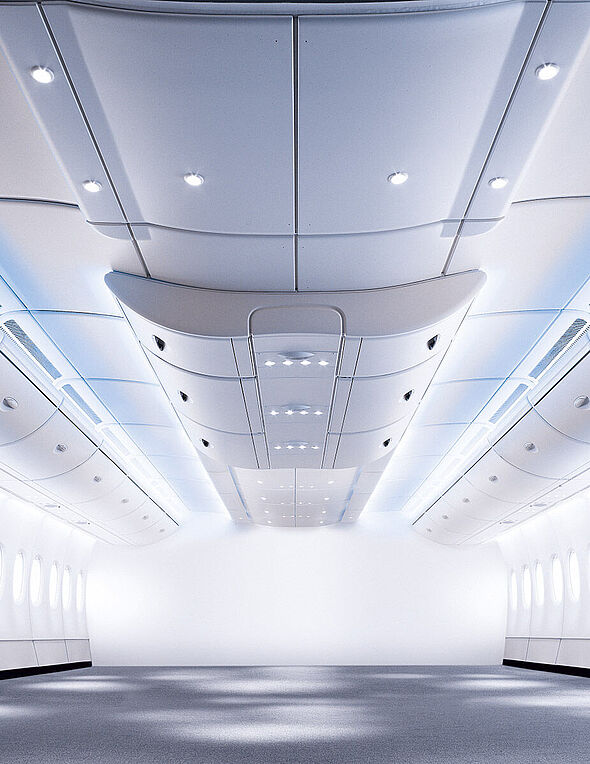Diehl Aircabin GmbH
Target costing at Diehl Aircabin: successfully transferring methods from the automotive industry to aviation
A new perspective on costing – improving long-term competitiveness
When implemented consistently, target costing can greatly enhance competitiveness. In a project with Diehl Aircabin, Ingenics was able to show that cost-oriented management can provide guidance for all aspects of the development and manufacturing process. Here the target defines the approach and points of leverage as well as solutions. As a result, margins are no longer merely a passive consequence of design and production.

- Team coaching
- Support for important and critical work meetings
- Development of a cost control tool concept
- Cost appraisal
- Margin optimization
How should the sale price of products and vendor parts be calculated in order to ensure that they are competitive on the one hand while also achieving a satisfactory financial result for manufacturers? This is the central question of target costing, familiar to Tier 1 suppliers in the automotive industry for many years. For companies in the aviation sector, it is a relatively new idea – but one that offers great potential for cost optimization, as demonstrated by Ingenics in a consulting project with Diehl Aircabin GmbH at the company’s site in Laupheim.
The general approach has stood the test of time in the automotive industry and is now beginning to take root in the aviation sector, albeit a little later and with some adjustments. The management method of defining target costs as a starting point when making calculations can offer important support for strategic decisions, as can be seen in the area of single and small series production in the aviation industry. Ingenics provides the methods as well as the expertise required to introduce and implement this approach.
As the world’s leading supplier to aircraft manufacturers, Diehl Aircabin recognized an urgent need for action at a relatively early stage – and the company is now responding to secure an acceptable profit over the long term. The task of the Ingenics consultants was to develop and secure methods and procedures. A crucial detail for the success of this project at Diehl Aircabin was to take the usual questions about costing and to turn them on their head. Instead of asking what a product was going to cost, the question was rather what can the product cost? This entails using a reverse calculation based on the sale price to determine what the maximum cost could be and what proportion of costs should fall to which areas. If the highest permitted costs are exceeded, the product does not become more expensive, but the profit margin decreases.
The consultants working at Diehl Aircabin encountered a rather complex set of relationships. The aircraft equipment supplier is a business unit of Diehl Aerosystems, a division of the Diehl Group that provides a wide range of system solutions and functions for aircraft cabins. Among other things, the company produces interior equipment – some of which consists of more than 100,000 components – for aircraft manufacturers such as Airbus, Boeing, Eurocopter, Bombardier, and Embraer.
It was previously common in the aviation industry for customers and contractors to agree on a price long before production actually began. In practice, however, there were frequently discrepancies between the technical and financial predictions made during the quotation phase and the actual costs that then emerged for designing and manufacturing a solution. Working together with a team of experts from Diehl, the Ingenics consultants first established an overview of target costs based on the actual production volume. Recurring costs in series production after the hundredth plane play a central role in calculations: they have to be stable for the whole series.
The predicted magnitude of these recurring costs (RC) is a crucial control variable in terms of optimizing margins, and this also provides a shared basis of work for all teams whenever there is a need to describe and assess a series product is needed (parts list with cost appraisal). The basic parameter is the batch size, taking into account any modifications and improvements.
This approach differs greatly from conventional costing. In order to arrive at cost objectives with the ability to control how work proceeded in the development phase, budgeted costs are updated each week in line with the Ingenics method and synchronized with the latest state of developments. The “RC-t100 forecast” avoids wasting time and effort on developments that would later prove to be unfeasible due to unachievable cost targets.
In contrast to companies that prefer to disclose no cost information rather than inaccurate details – which results in a fatal case of “cost blindness” – the team at Diehl Aircabin has recognized the direction of the tide and acted accordingly.